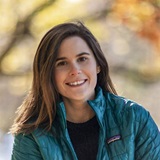Evidence Informed Decision-Making Doesn’t Start with Science—It Starts with People
A case study on how we co-design and engage with research to inform decision-making needs

There is a strong desire to design scientific research in a way that informs policy and decision-making. Yet the process for doing so is not as straightforward as it seems. After over a decade of grant-making, we have learned that creating research useful to managers and communities alike starts with people. Rather than a focus on articulating the perfect research questions, as we scientists often do, the process truly begins with relationship building. In other words, engaging with scientists, other knowledge holders, managers, stakeholders and more, to foster mutual understanding of what communities need.
We call this co-design, where we bring a variety of people together to generate research questions and structure the projects that we fund. To demonstrate how our approach can help make research more useful, we published “Grant-Making Criteria for Developing Useful and Useable Marine Science: A Philanthropic Perspective.” In it, we use an example of project currently being led by Dr. Brian Silliman, Duke University, to improve coastal restoration success through ecological research.
A Coastal Conundrum
As seagrass beds, wetlands, marshes, and coral reefs become increasingly degraded from human activity, such as dredging, coastal development, and climate change, coastal restoration is gaining momentum as a technique to reestablish these habitats and increase their resilience. However, restoration can be costly, and significant knowledge gaps remain about how to maximize restoration success.
Dr. Silliman’s lab focuses on this issue. To decrease costs and maximize success, they test new marine restoration methods and designs that can then be transferred to larger scales by managers and practitioners. They’ve found that managers are often focused on reducing negative interactions—like predation and competition—at restoration sites. But what would happen if they focused on increasing positive interactions among species at restoration sites? This thought led the Lenfest Ocean Program to work with Dr. Silliman in developing research questions that could help managers shift the restoration paradigm for greater success.
Useable Science Begins with Early Engagement
When it came to Dr. Silliman’s project, he was already well versed in the field and needs of restoration managers and practitioners. But would his questions about increasing positive species interactions actually be useful for the managers he worked with?
While a growing body of research suggested that positive interactions can enhance restoration success, there had not yet been a project that bridged the gap between academic study and restoration practice. With high costs and limited funding, managers needed to be confident that adopting such an approach would maximize their impact but not drain resources.
To better understand managers' most pressing questions for coastal restoration, the Lenfest team worked with Dr. Silliman to convene several meetings and conversations with the people who would most likely use results from such a project. Together, we learned not just what managers and practitioners wanted to know, but also what specific advancements would help them feel comfortable incorporating positive interactions into restoration practice.
Specifically, they needed to see whether small-scale restoration projects could be successful at larger spatial scales. They also wanted to understand what general restoration site characteristics could be gleaned from such experiments and applied in a variety of habitats. And finally, they wanted robust monitoring at restoration sites, or the ability to track the impacts of positive species interactions long-term.
Aligning Research with the Decision-making Process
Through these conversations, Dr. Silliman was able to formulate his research questions and design his project through a decision-making lens. He also formed durable relationships with managers and practitioners that persisted through the life of the project. In concert with these new partners, Lenfest and Dr. Silliman identified four research locations in North Carolina, California, the Netherlands, and China. Restoration projects are now underway at multiple sites with differing ecological conditions, from salt marshes to estuarine environments and river deltas. Further, once three years’ worth of experiments are completed, these local partners are poised to take over monitoring the restoration sites going forward.
With Grant-making, Comes Great Responsibility
When it comes to funding research, grant-making organizations play a valuable role in how research and the larger field of study it fits in is shaped. At Lenfest, we try to be conscious of this dynamic and create balance through a collaborative grant-making process that involves scientists, managers, and stakeholders. We are by no means the only funder that focuses on supporting useful and useable science, but we hope that by sharing our approach to co-design, we can pull back the curtain on a key component of our work and this will encourage other funders to contribute similarly. In doing so, we can collectively compare insights and lessons learned, and improve our role as funders in helping science better serve society.
Read the full paper, including how our grant criteria guides the co-design process.



